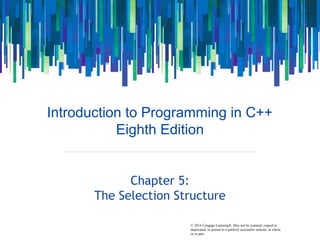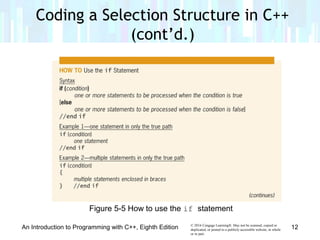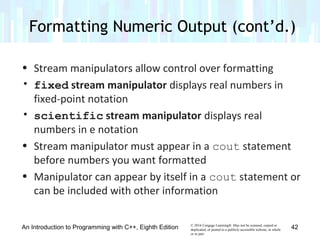This document is a chapter from a textbook on C++ programming titled "Introduction to Programming in C++". The chapter covers selection structures, including if/else statements, comparison operators, logical operators, and examples of programs that incorporate selection structures like calculating gross pay and displaying the area or circumference of a circle based on user input. The objectives are to code selection structures using if statements, include comparison/logical operators in conditions, and temporarily convert characters between uppercase and lowercase using functions.









![© 2016 Cengage Learning®. May not be scanned, copied or
duplicated, or posted to a publicly accessible website, in whole
or in part.
• The if (and else) statement is used to code most
selection structures in C++
• Syntax
if (condition)
one or more statements (true path)
[else
one or more statements (false path)]
• Keyword if and condition are required
• Portion in brackets (else clause) is optional
– Only used for dual-alternative selection structures
Coding a Selection Structure in C++
An Introduction to Programming with C++, Eighth Edition 10](https://image.slidesharecdn.com/9781285860114ch05ppt-151120203247-lva1-app6891/85/Chapter-5-The-Selection-Structure-10-320.jpg)



















































